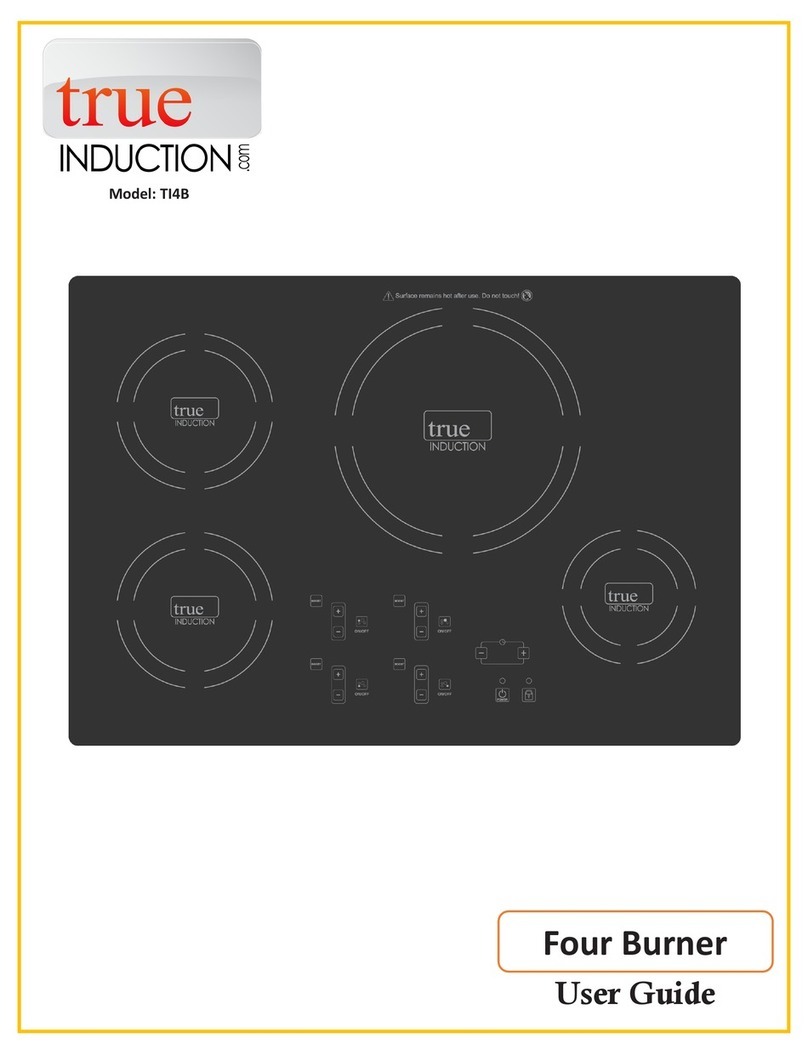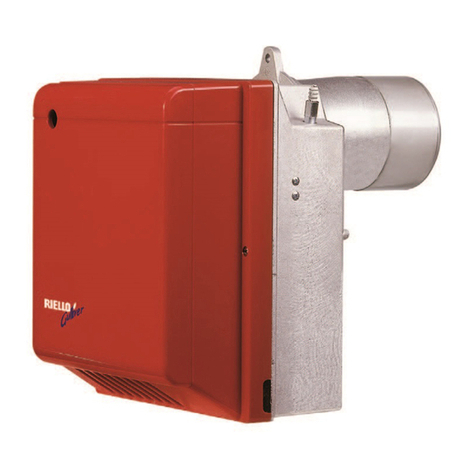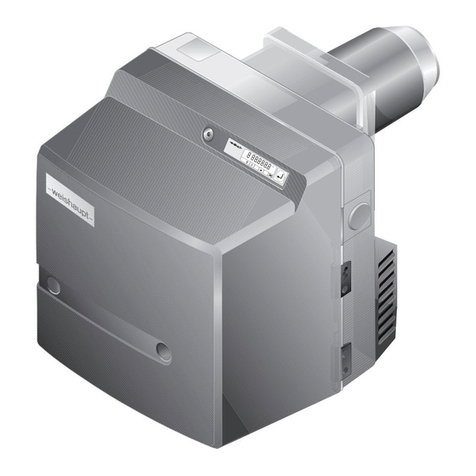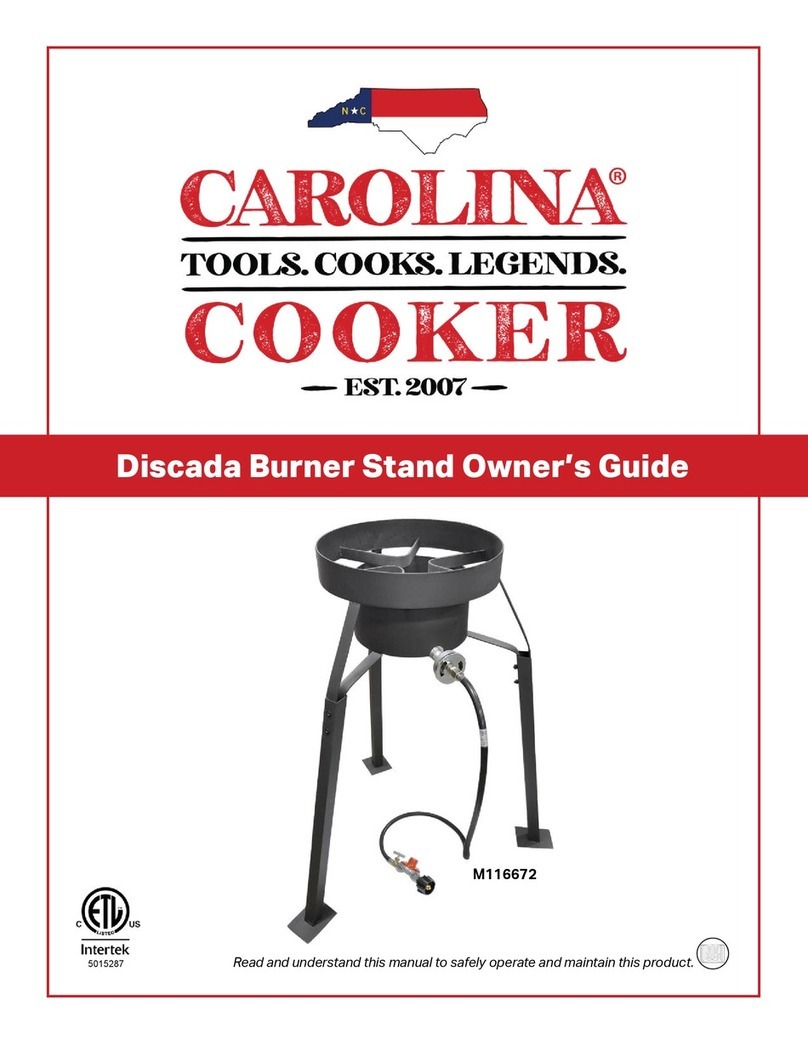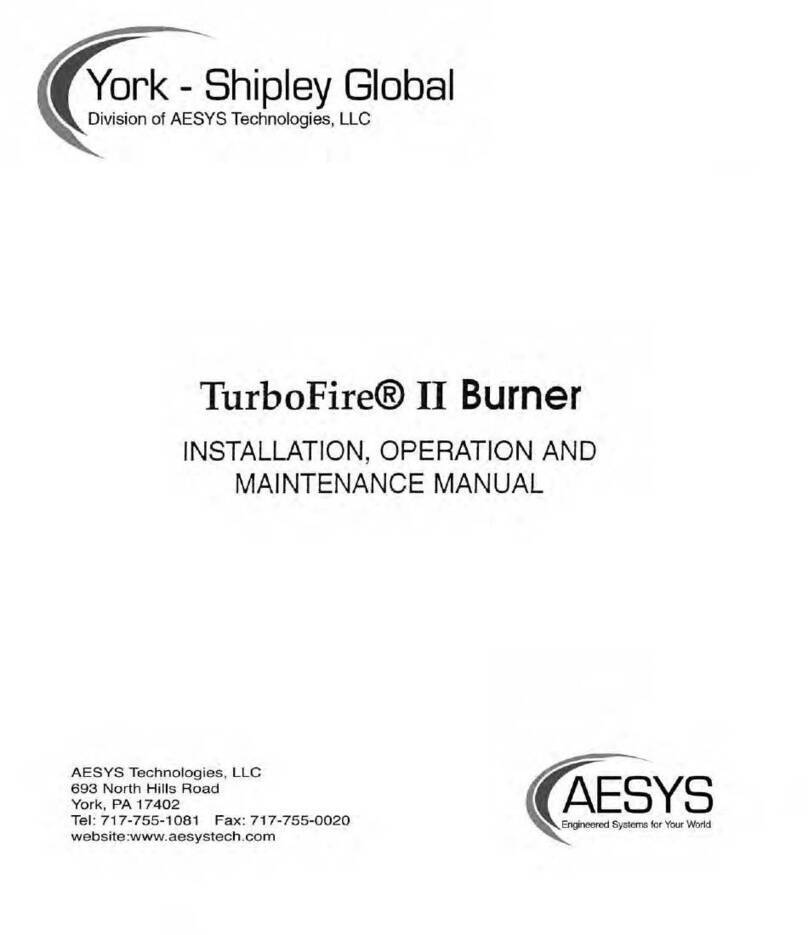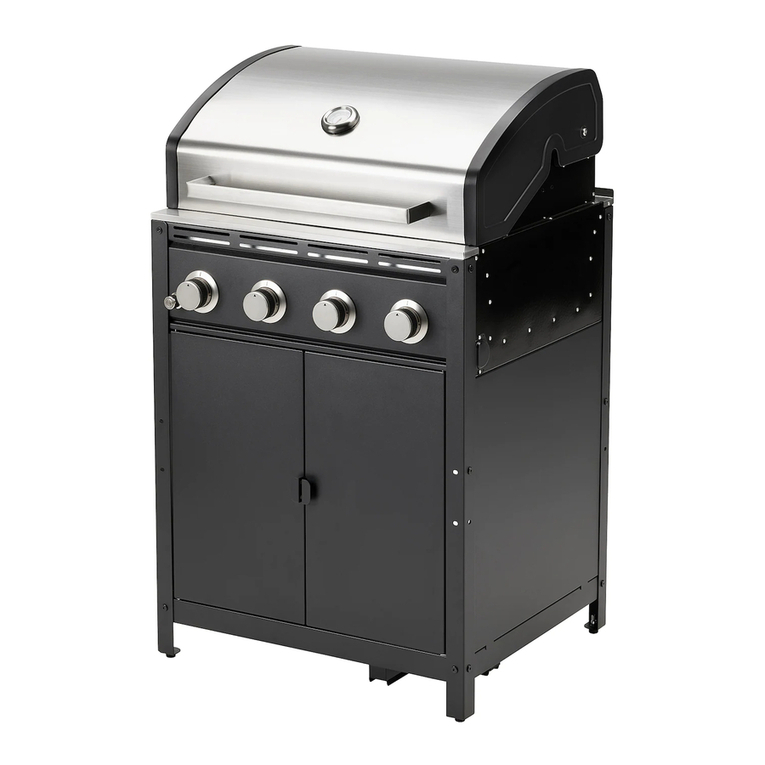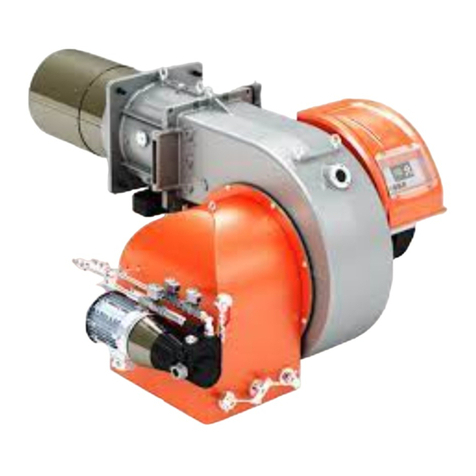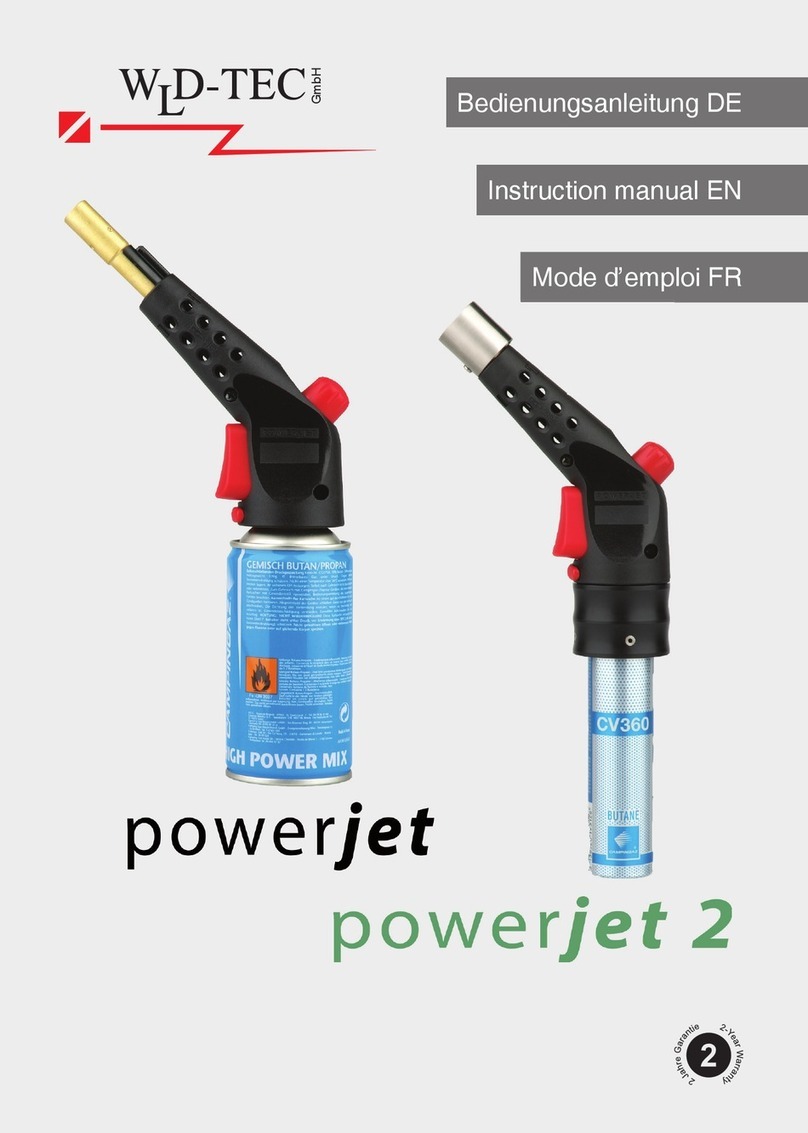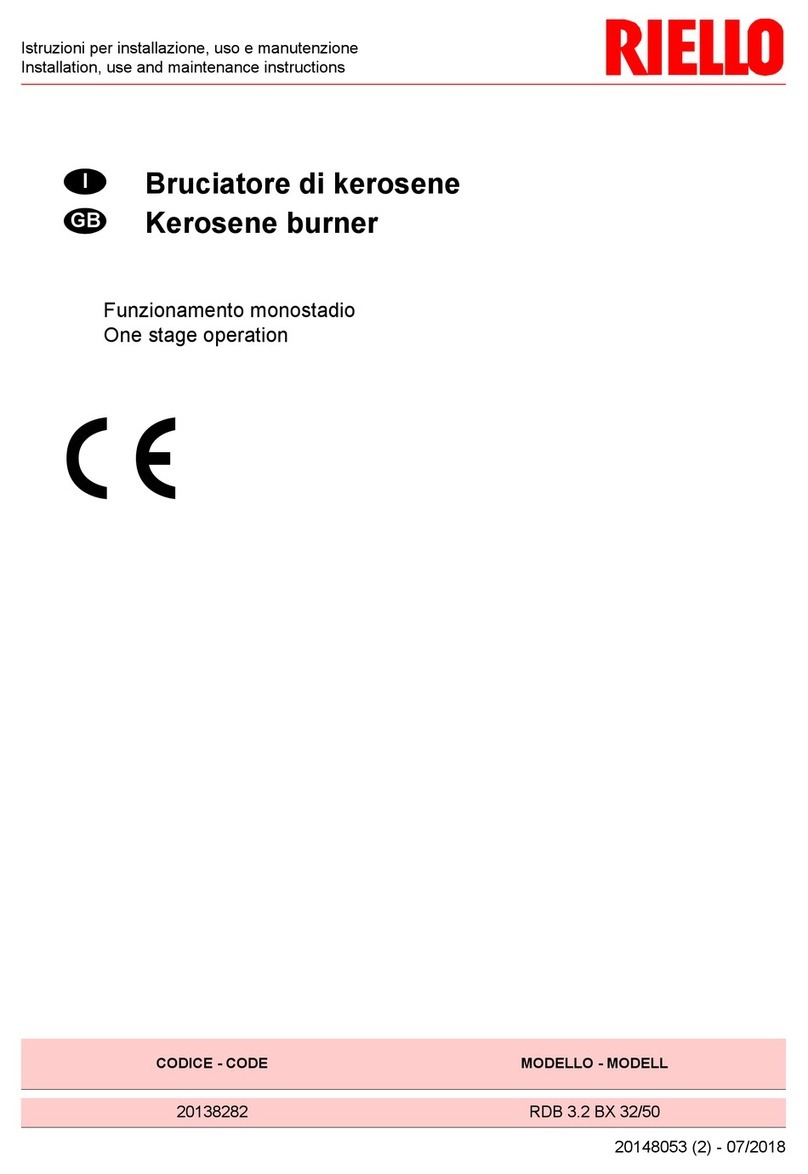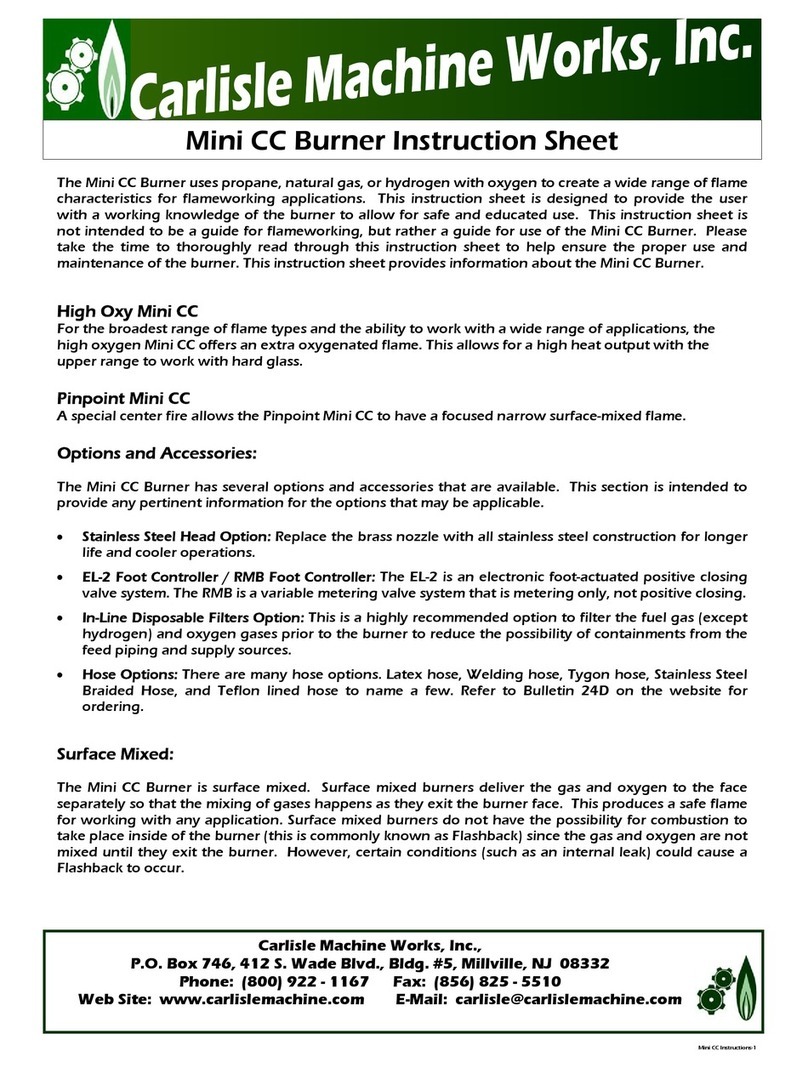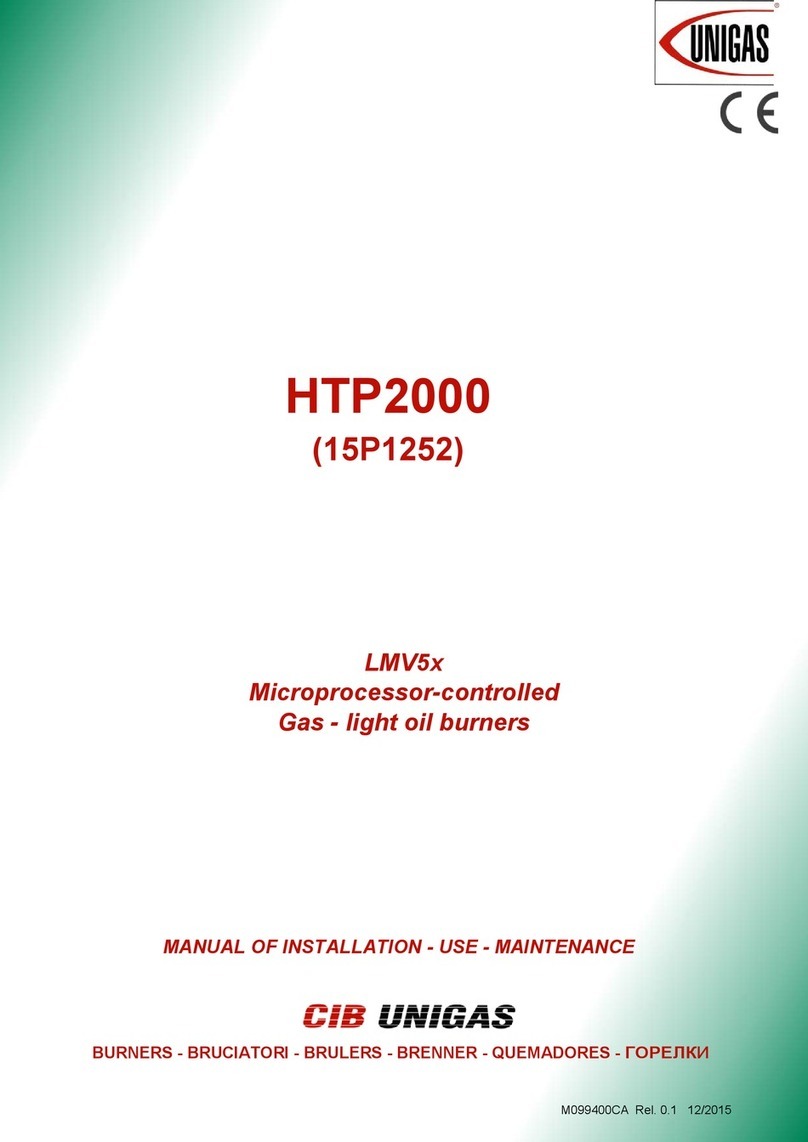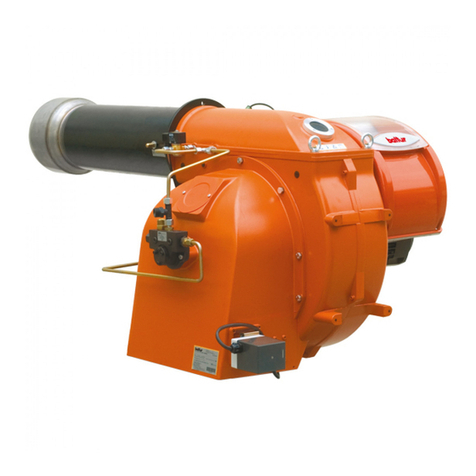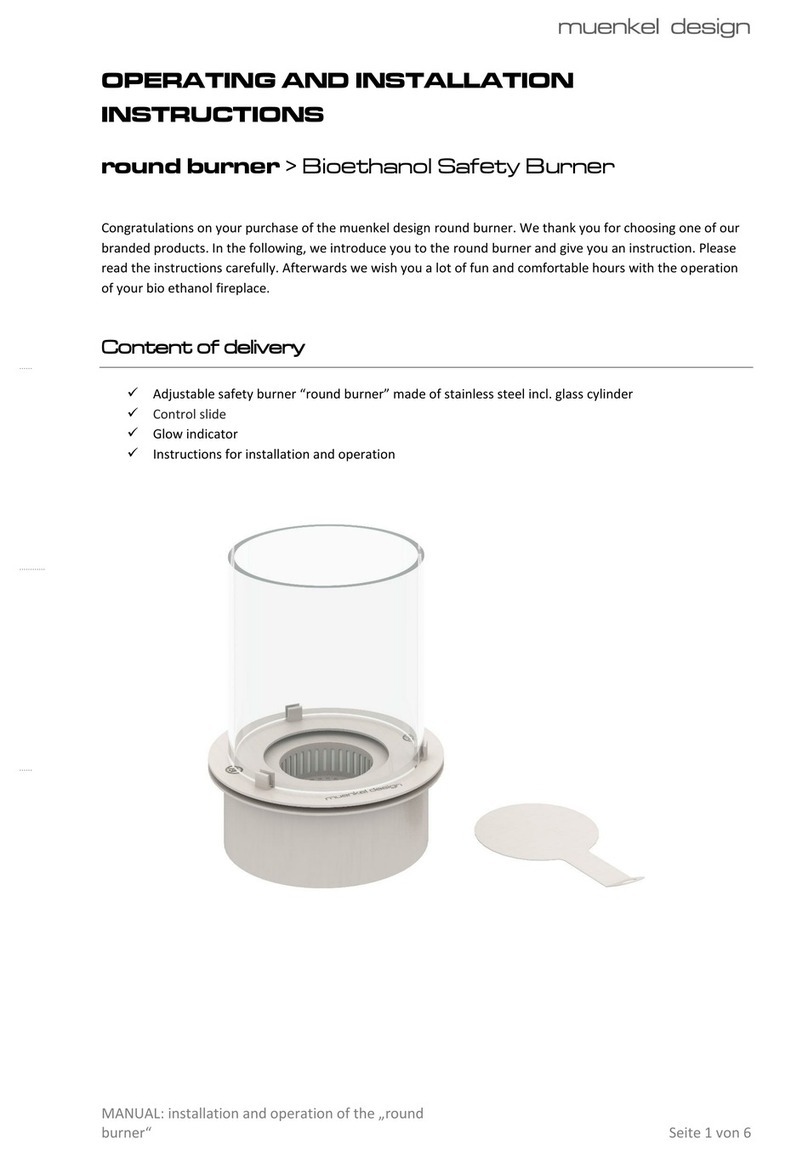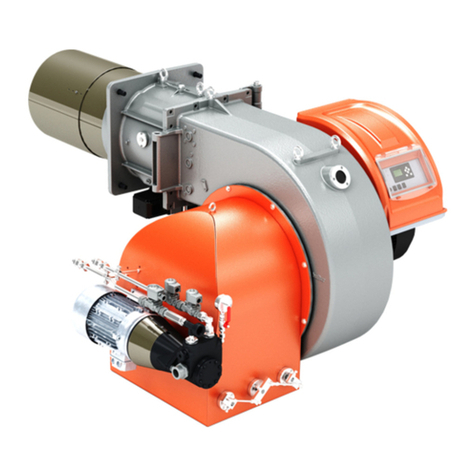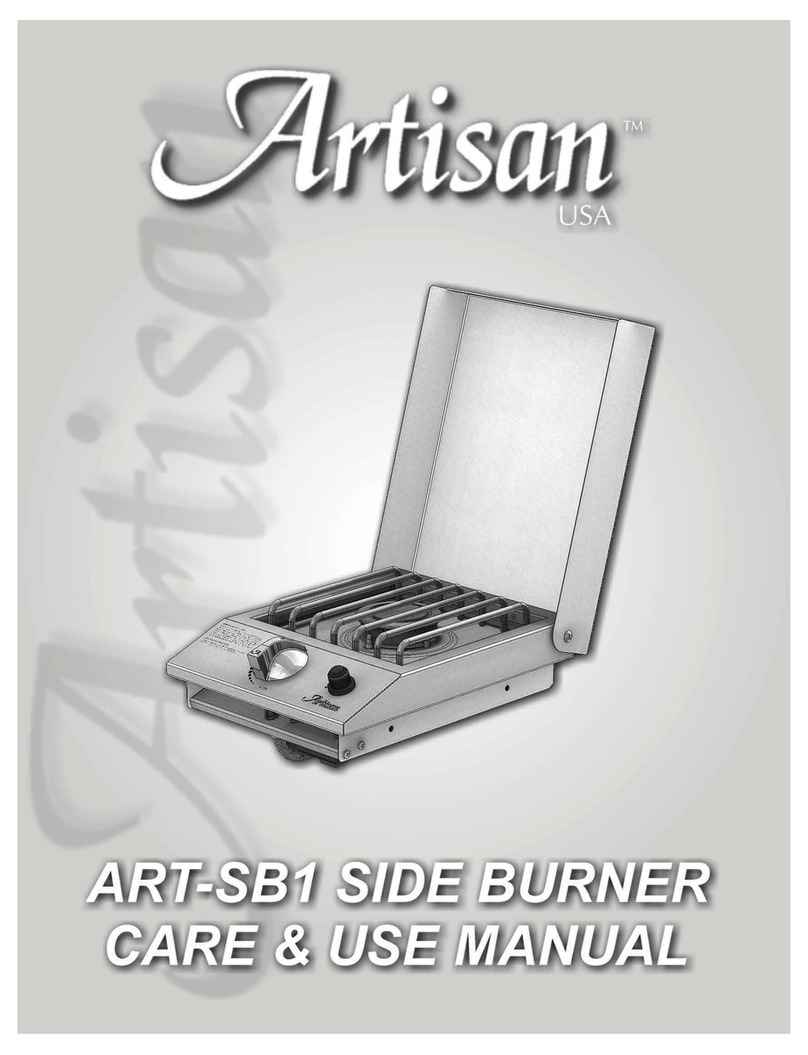
Control Valves:
Standard models require two valves which are, located on the back of the Lucio Burner. One control
valve has a red handle and is used for metering the fuel gas flow to the burner. One control valve has a
green handle and is used for metering the oxygen flow to of the burner.
These control valves are finely threaded and thus require several full turns to become fully open or fully
closed. When using these valves to control the flames, it is best to make small incremental adjustments
rather than full turns. Quick or large adjustments could cause the flame to become unstable and even
blow off of the face of the burner. In time, the user will learn the best way to control the burner for
their application.
The valve stems are threaded and secured into the valve body via a nut. This nut is threaded onto the
valve body and the stainless steel stem extends through this nut. Depending on how tightly this nut is
threaded down onto the valve body, the stainless steel stem will be harder or easier to turn. If the nut is
tightly threaded down onto the valve body, the stem will have more resistance to movement. By
loosening this nut, the stem will become easier to adjust. Loosening the nut can also cause a leak to
form around the stem from the nut sealing area. Be sure to check for leaks (see
“Checking for Leaks”
)
anytime that this nut is adjusted.
When closing the control valve, the valve should be adjusted only until it seats and stops
turning. The valve should not be forced or “torqued” down any further. By turning the valve
handle with force, beyond its seal positioning, once it has seated, great pressure may be placed on the
seat. This will cause the seat or valve stem to become deformed and will result in a leak that can not be
Carlisle Machine Works, Inc.,
P.O. Box 746, 412 S. Wade Blvd., Bldg. #5, Millville, NJ 08332
Toll Free Phone : (800) 922 - 1167 Local Phone : (800) 825 - 0627
Fax: (856) 825 - 5510
Website: carlislemachine.com Email: carlisle@carlislemachine.com
Lucio Burner Instruction Sheet
Lucio Instructions-1
Checking for Leaks:
Before operating the Lucio Burner for the first time and once a month (see
“Maintenance”
) the burner
should have the control valves and all connections checked for leaks. Follow the procedure below to
check for leaks.
1. Connect air at 25 PSI to the burner.
2. Dip the head of the burner into a bucket of water.
3. Cycle through the control valves turning each one on and then shutting it off. When the control
valve is opened there should be a rush of bubbles in the water. After shutting the control valve off,
wait about 30 seconds to watch for any new bubbles. If bubbles appear at any rate, this would
indicate a leak in the control valve.
4. Remove the head from the water and use the air pressure to blow out any residual water.
5. Mix soap (liquid soap is best for this) and water to form a bubbly mixture for leak detection.
6. Turn on both control valves.
7. Apply the soapy mixture to all threaded connections, valve stems and between the barrel and
manifold at the back of the burner. If any of these areas produces bubbles after applying the soapy
mixture, the connection may have a leak.
8. Close all control valves and disconnect the air.
If a leak is detected, contact a Carlisle Representative for assistance.


